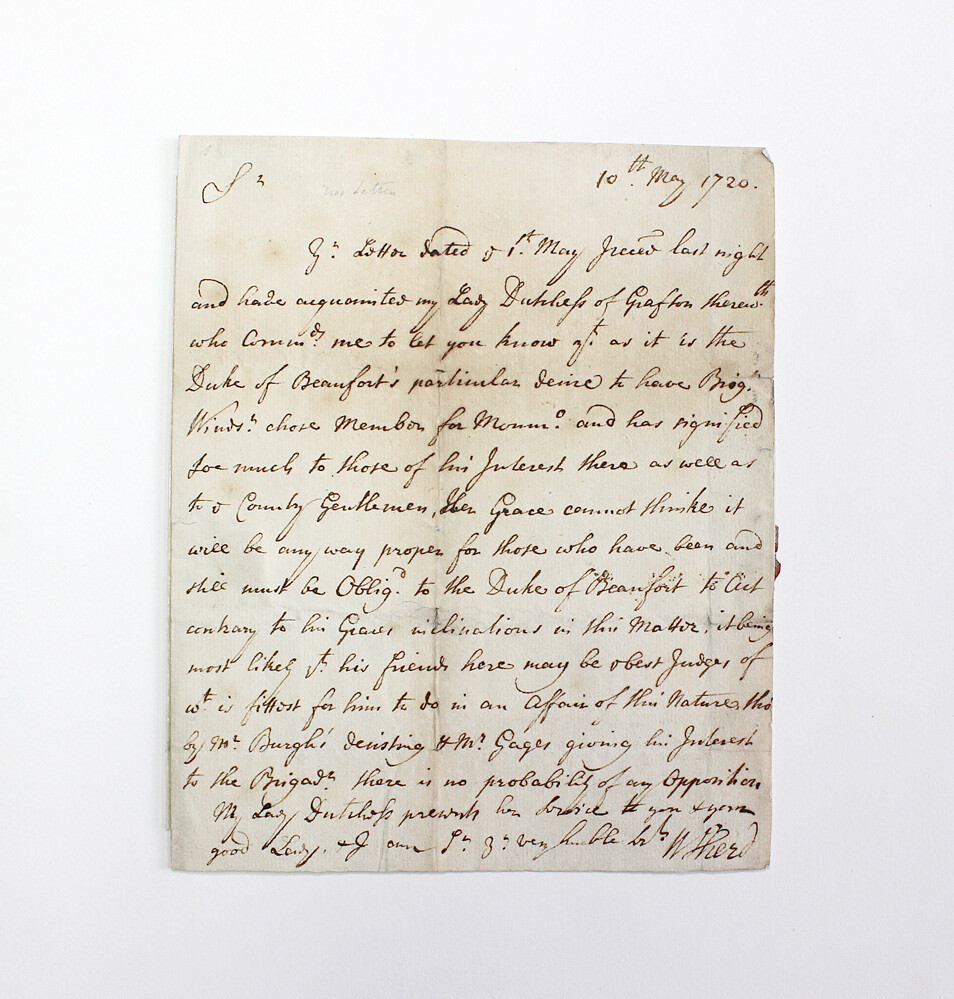
A letter Written in 1720 on behalf of Lady Duchess of Grafton Lady Henrietta Somerset by probably her cousin W Child. The letter is to a Lady Somerset and is to be passed over by George Morgan
A letter Written in 1720 on behalf of Lady Duchess of Grafton Lady Henrietta Somerset by probably her cousin W Child. The letter is to a Lady Somerset and is to be passed over by George Morgan of the Tredegar family in Monmouth.Lady Henretta Somerset was the sister of the 2nd Duke of Beaufort.The letter is political and deals with the election of the new Monmouth member of Parliament. The Duke of Beaufort who is mentioned in the letter desires a certain individual to be elected instead of the opposition. The seat of Monmouth became available when William Bray died in 1720. Monmouth was under the sway of the dukes of Beaufort, who had a strong interest in all its three constituent boroughs. In Monmouth the Duke controlled the council of 15 life-members; in Usk he was lord of the manor, appointing the burgesses through the recorder; in Newport, where he was lord of the borough, his steward nominated the mayor from two candidates chosen by the aldermen. By the eighteenth century considerable power in the last borough had also been acquired by a neighbouring family, the Morgans of Tredegar In 1715 the Beaufort nominee, Andrews Windsor, a Tory, was defeated by a Tredegar candidate, William Bray, a Whig. This was the last challenge to Beaufort domination till 1820. By the middle of the century the dukes of Beaufort had an understanding with the Morgan and Hanbury families whereby the Morgans and Hanburys shared the county representation, leaving the borough under Beaufort control.
